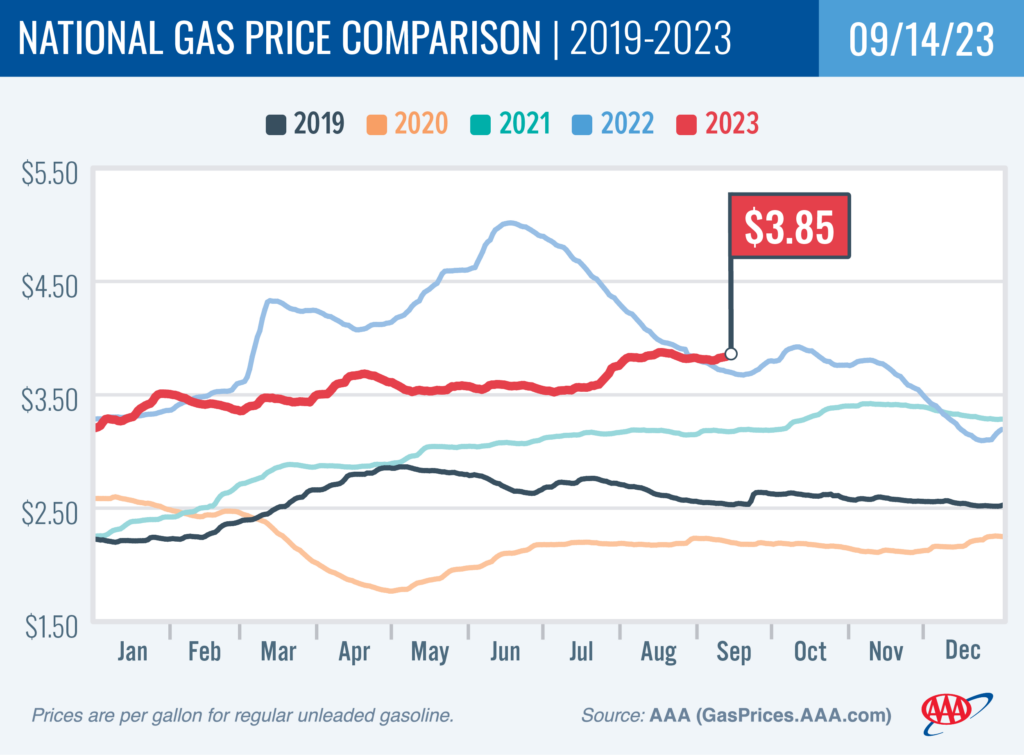WASHINGTON, D.C. — The national average for a gallon of gas rose by a nickel since last week to hit $3.85. The primary culprit is the surge in oil costs, which have jumped several dollars to hover around $90 per barrel.
“Oil costs are putting upward pressure on pump prices, but the rise is tempered by much lower demand,” said Andrew Gross, AAA spokesperson. “The slide in people fueling up is typical, with schools back in session, the days getting shorter, and the weather less pleasant. But the usual decline in pump prices is being stymied for now by these high oil costs.”
According to new data from the Energy Information Administration (EIA), gas demand decreased significantly from 9.32 to 8.31 million b/d last week. Meanwhile, total domestic gasoline stocks jumped from 214.7 to 220.3 million bbl. Although gas demand has dropped amid increasing stocks, elevated oil prices have pushed pump prices higher.
Today’s national average of $3.85 is the same as a month ago but 15 cents more than a year ago.

Quick Stats
- Since last Thursday, these 10 states have seen the largest increases in their averages: Minnesota (+32 cents), North Dakota (+31 cents), Iowa (+29 cents), Nebraska (+27 cents), Oklahoma (+27 cents), South Dakota (+22 cents), Montana (+20 cents), Arizona (+17 cents), Missouri (+17 cents) and Kansas (+16 cents).
- The nation’s top 10 most expensive markets: California ($5.50), Washington ($5.05), Hawaii ($4.79), Nevada ($4.73), Oregon ($4.70), Alaska ($4.60), Arizona ($4.51), Utah ($4.32), Montana ($4.20) and Idaho ($4.15).
Oil Market Dynamics
At the close of Wednesday’s formal trading session, WTI decreased by 32 cents to settle at $88.52. Oil prices fell yesterday after the EIA reported that total domestic commercial crude inventories increased by 4 million bbl to 420.6 million bbl. However, earlier in the week, crude prices rallied amid ongoing market concern that global oil supply will remain tight for the remainder of 2023. According to the International Energy Agency’s September 2023 Oil Market Report, production cuts from Saudi Arabia and other members of the Organization of the Petroleum Exporting Countries will lead to an oil supply shortfall this fall and winter.
Drivers can find current gas prices along their route using the AAA TripTik Travel planner.
